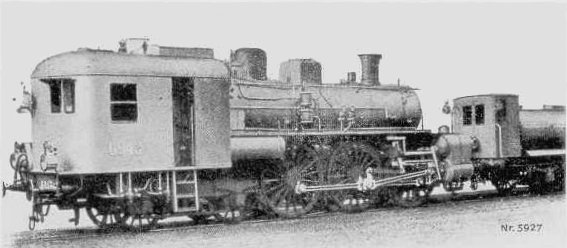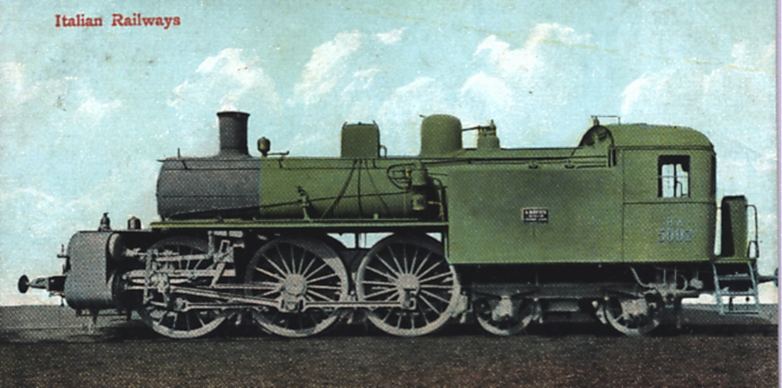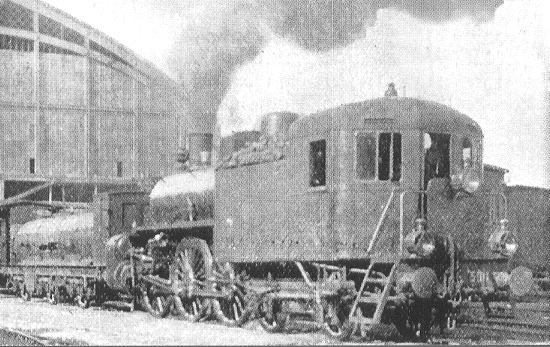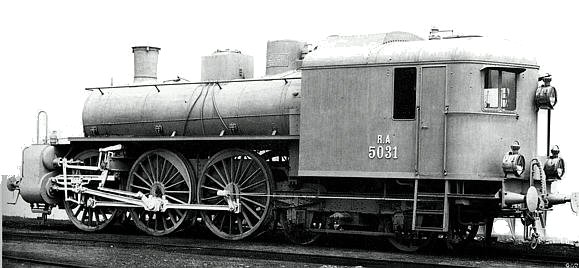This 4-6-0 locomotive was designed in 1900, for the Southern Adriatic railway. A prototype was exhibited at the International Railway Congress in Paris. It must have been a success, because locos of this design were working the most prestigious Milan-Bologna expresses in 1922, and in 1932 were still working on the Milan-Verona-Venice run. They finally ceased work in the early 1940's.
These locomotive were called "mucca" by their crews; the word is Italian for "cow". In English that would be an insulting term for a difficult-to-handle piece of machinery, but it has been suggested to me that in Italian the implication is that it could be milked- in other words the crew were well-paid.
 |
| Left: The loco with its tender
The tender was a cylindrical tank and carried only water.
|
This loco was a four-cylinder compound with side coal-bunkers, which look rather small in capacity. Apparently coal was also carried on the roof. The difficulty of getting coal from a rear tender seems to have been the major disincentive to building the cabforward configuration.
There is a Wikipedia page on the Gr670, but be warned that it is in Italian.

|
Above: Postcard of a Gr670 4-6-0 Cab-Forward locomotive
This rather grubby postcard gives a good side-view of a Gr670. (This one of the Valentine postcard series, pre-WW1) Note that the cylinders are placed well behind the smokebox, in order to make room for the connecting rods and valvegear, though things still look pretty cramped. This is because the position of the firebox above the front bogie meant that the driving wheels had to be well to the rear. and it looks as though they did not carry a very great proportion of the total weight; adhesion may have been poor.
Comparing this locomotive with the one at the top of the page, there are distinct difference. Here there appears to be no coal-bunker on the roof, and the cab door is located at the front, behind the little platform with the ladder.
|
 |
| Left: Front view of Gr670 4-6-0 with door at front
This picture is sadly of poor quality but it shows the version of the Gr670 with cab door and platform at the front.
|
CONVERSION TO FRANCO-CROSTI PREHEATER SYSTEM
One of the early experiments with the Franco-Crosti boiler system was the conversion of a Gr670.

Above: The Gr672 was a 671 adapted to the Franco-Crosti boiler system.
The idea behind the Franco-Crosti boiler system was to make better use of the heat remaining in the exhaust. The firebox gases go through a normal boiler and then a preheater, which heats the feedwater before it reaches the boiler. Here a big pipe carries the hot gases from the boiler to the preheater which has replaced the tender. The exhaust steam from the cylinders is piped back to a blastpipe just below the chimney at the rear of the preheater.
See Franco-Crosti Boilers for another photo.

Above: The Franco-Crosti Gr672 4-6-0 with its casing in place.













